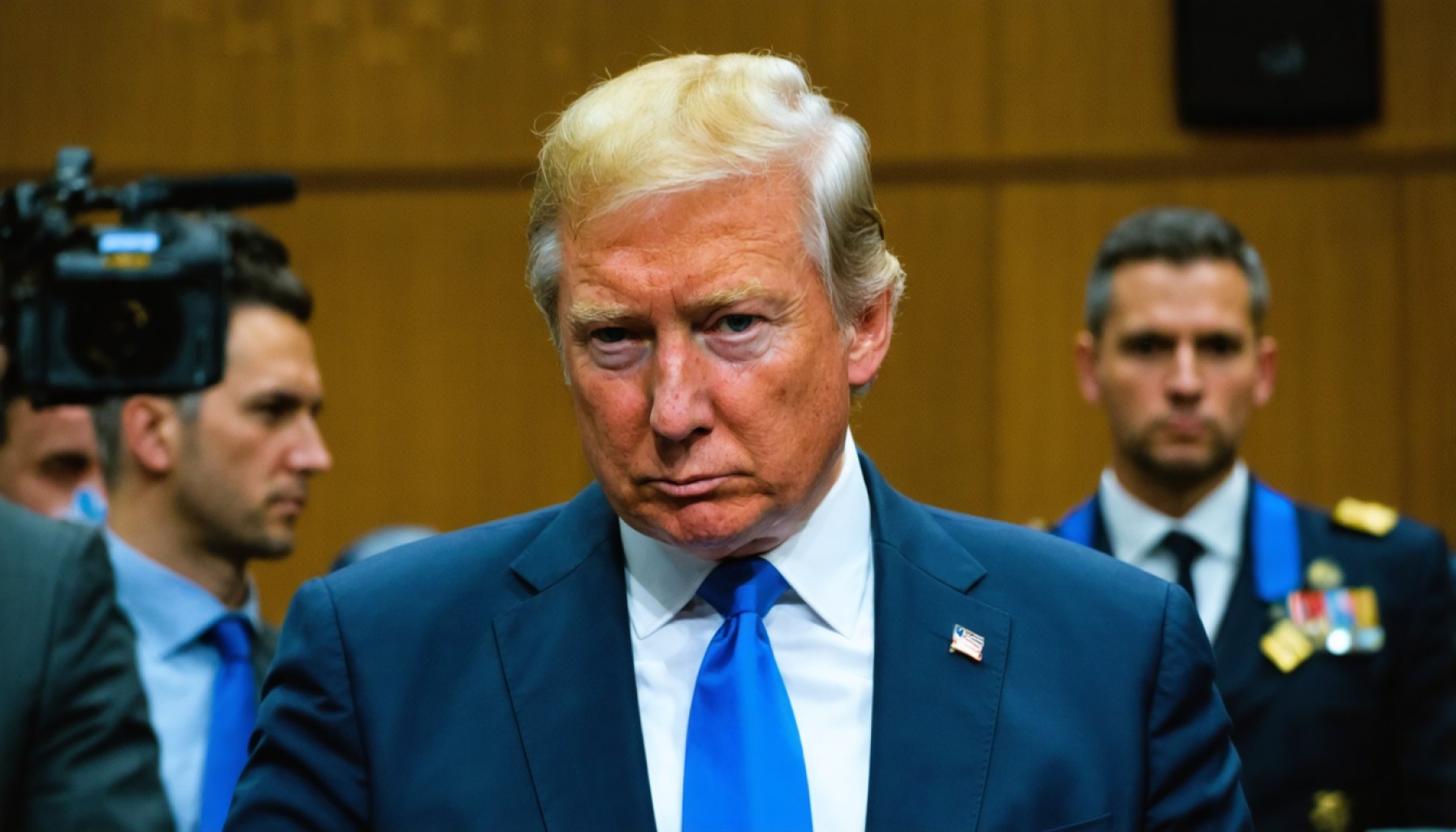- The U.S. surprisingly aligned with Russia on recent Ukraine conflict votes, signaling a major shift in foreign policy under Donald Trump.
- A U.S.-backed UN resolution called for a ceasefire and durable peace but avoided condemning Russia directly, highlighting U.S.-Russia alignment.
- The resolution, seen as a “historic accord,” sparked tension among European nations, who abstained from vetoing it but favored a stronger stance on Ukraine’s sovereignty.
- European amendments to the resolution emphasized blaming Russia and reaffirmed Ukraine’s territorial integrity, indicating differing international views.
- This diplomatic shift at the UN is redefining global alliances and impacting discussions on peace and territorial rights in Eastern Europe.
A murmur of disbelief swept through the halls of the United Nations as the United States, long a stalwart ally of Ukraine, aligned itself with Russia during recent votes on the Ukraine conflict. The unexpected pivot by Washington underscores a seismic shift in U.S. foreign policy, largely attributed to the return of Donald Trump to the White House.
The Security Council chamber, with its iconic horseshoe table, became the stage for a dramatic endorsement of a U.S.-backed resolution. The text called for the swift cessation of hostilities and advocated for a durable peace, carefully omitting direct condemnation of Russia’s actions. Such a resolution, with its binding potential, showcased the unusual alignment of American and Russian interests, a union that left several European powers in silent abstention, avoiding the exercise of their vetoes.
In the opulent corridors of diplomacy, whispers of “historic accord” echoed, marking the first such agreement in three turbulent years. The interim American ambassador hailed the resolution as a beacon of peace, while the Kremlin nodded approvingly, calling Washington’s stance “balanced.” Yet, beneath the diplomatic platitudes lay an unmistakable tension, mirrored in the icy glare of European delegates advocating for a peace that would not compromise Ukraine’s sovereignty.
As the General Assembly convened in its vast hall, the resolution faced robust alterations. European amendments pointedly blamed Russia, reaffirming Ukraine’s territorial integrity and demanding what was termed a “just peace.” Despite the changes, the resolution passed, supported by a coalition wary of Moscow’s intentions.
This new chapter in U.S. diplomacy at the United Nations sends ripples across the geopolitical landscape, challenging long-held alliances and reshaping the conversation about peace in Eastern Europe. As tensions simmer, the world watches to see where this bold maneuver will lead, and what it signifies for the future of international relations.
Unexpected U.S.-Russia Unity: What This Means for Global Diplomacy and Ukraine
How-To Steps & Life Hacks: Understanding Shifts in U.S. Foreign Policy
1. Stay Informed: Follow reliable news outlets and official government statements to track changes in foreign policy.
2. Critically Analyze News: Evaluate sources for bias. Seek diverse perspectives to grasp the full implications of diplomatic shifts.
3. Engage in Policy Discussions: Participate in forums or groups focused on international relations to discuss and gauge public sentiment and expert analyses.
4. Educate Yourself: Read books and articles from thought leaders in diplomacy to understand the historical context of current events.
Real-World Use Cases
– Diplomatic Strategy: The recent U.S. shift serves as a case study in diplomatic strategy, highlighting the complexity of international relations and alliance dynamics.
– International Relations Education: Universities and political think tanks might analyze the event to teach negotiation tactics and explain the repercussions of sudden policy shifts.
Market Forecasts & Industry Trends
– Arms and Defense: This diplomatic shift may impact the global arms market, with countries reconsidering their defense strategies and partnerships.
– Energy Sector: Changes in U.S.-Russia relations could alter energy exports and imports, influencing global prices and energy security strategies.
Reviews & Comparisons
– Historical Precedents: Compare with past U.S. foreign policy decisions, such as détente with the Soviet Union, to assess potential outcomes and risks.
– European Relations: Examine the nuances of Europe’s response, as they balance reliance on U.S. leadership with commitments to Ukraine’s sovereignty.
Controversies & Limitations
– Internal Political Divide: A significant controversy revolves around domestic political reactions in the U.S., with criticism from those who support unwavering support for Ukraine.
– Global Security Concerns: This alignment raises alarms about the potential emboldenment of Russia in Eastern Europe and beyond.
Features, Specs & Pricing
– Diplomatic Tools and Agreements: Analyze the specifics of the drafted resolutions and U.N. proceedings, assessing the mechanisms involved in conflict resolution efforts.
Security & Sustainability
– Strategic Stability: The formation of unlikely alliances can disrupt regional stability—analyzing potential security threats is crucial.
– Long-Term Peace Prospects: Sustained peace efforts require extensive cooperation—a potential point of failure if key stakeholders aren’t fully aligned.
Insights & Predictions
– Short-term Predictions: Expect heightened geopolitical tension as countries reassess alliances and strategic positions.
– Long-term Consequences: Possible shifts in global power dynamics if U.S.-Russia relations deepen, impacting global governance structures.
Tutorials & Compatibility
– Engaging with U.N. Resolutions: Learn the process of U.N. resolution drafting and passing. Understand how stakeholders can influence outcomes.
Pros & Cons Overview
Pros:
– Potential for accelerated peace talks and reduced hostilities if successful.
– Showcases diplomatic adaptability and realpolitik in U.S. foreign policy.
Cons:
– Risks alienating traditional allies, leading to strained relationships with European nations.
– Perceived compromise on ethical stances concerning sovereignty and territorial integrity.
Actionable Recommendations
1. Stay Politically Active: Encourage representatives to consider public sentiment and ethical implications in foreign policy decisions.
2. Support Informed Debates: Promote education and discussions on foreign policy issues within your community or network.
3. Monitor Economic Indicators: Keep an eye on how these diplomatic changes affect markets you might be invested in, particularly in energy and defense.
For more information on U.S. foreign policy and international relations debates, visit the official United Nations site.
